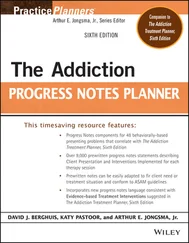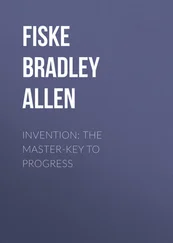5 Explosive, Destructive Outbursts (5)The client described a history of loss of temper in which he/she/they have destroyed property during fits of rage.The client described a history of loss of temper that dates back to childhood, involving verbal outbursts as well as property destruction.As therapy has progressed, the client has reported increased control over his/her/their temper and a significant reduction in incidents of poor anger management.The client has had no recent incidents of explosive outbursts that have resulted in destruction of property or intimidating verbal assaults.
6 Explosive, Assaultive Outbursts (5)The client described a history of loss of anger control to the point of physical assault on others who were the target of his/her/their anger.The client has been arrested for assaultive attacks on others when he/she/they have lost control of his/her/their temper.The client has used assaultive acts as well as threats and intimidation to control others.The client has made a commitment to control his/her/their temper and terminate all assaultive behavior.There have been no recent incidents of assaultive attacks on anyone, in spite of the client having experienced periods of anger.
7 Overreactive Irritability (6)The client described a history of reacting too angrily to rather insignificant irritants in his/her/their daily life.The client indicated that he/she/they recognize that he/she/they become too angry in the face of rather minor frustrations and irritants.Minor irritants have resulted in explosive, angry outbursts that have led to destruction of property and/or striking out physically at others.The client has made significant progress at increasing frustration tolerance and reducing explosive overreactivity to minor irritants.
8 Physical/Emotional Abuse (7)The client reported physical encounters that have injured others or have threatened serious injury to others.The client showed little or no remorse for causing pain to others.The client projected blame for his/her/their aggressive encounters onto others.The client has a violent history and continues to interact with others in a very intimidating, aggressive style.The client has shown progress in controlling his/her/their aggressive patterns and seems to be trying to interact with more assertiveness rather than aggression.
9 Harsh Judgment Statements (8)The client exhibited frequent incidents of being harshly critical of others.The client's family members reported that he/she/they react very quickly with angry, critical, and demeaning language toward them.The client reported that he/she/they have been more successful at controlling critical and intimidating statements made to or about others.The client reported that there have been no recent incidents of harsh, critical, and intimidating statements made to or about others.
10 Angry/Tense Body Language (9)The client presented with verbalizations of anger as well as tense, rigid muscles and glaring facial expressions.The client expressed his/her/their anger with bodily signs of muscle tension, clenched fists, and refusal to make eye contact.The client appeared more relaxed, less angry, and did not exhibit physical signs of aggression.The client's family reported that he/she/they have been more relaxed within the home setting and has not shown glaring looks or pounded his/her/their fist on the table.
11 Passive-Aggressive Behavior (10)The client described a history of passive-aggressive behavior in which he/she/they would not comply with directions, would complain about authority figures behind their backs, and would not meet expected behavioral norms.The client's family confirmed a pattern of the client's passive-aggressive behavior in which he/she/they would make promises of doing something, but not follow through.The client acknowledged that he/she/they tend to express anger indirectly through social withdrawal or uncooperative behavior, rather than using assertiveness to express feelings directly.The client has reported an increase in assertively expressing thoughts and feelings and terminating passive-aggressive behavior patterns.
12 Time Bomb (11)The client tends to passively withhold feelings, and then explodes in a rage.The client seems to be “adding up” slights and irritations, waiting until enough have been “banked” and then explodes into a rage.The client appears to have rageful feelings under the surface, but presents in a passive manner.As treatment has progressed, the client has improved in regard to being able to express his/her/their feelings appropriately, and has decreased the reactive rage episodes.
13 Overreaction to Perceived Negative Circumstances (12)The client seems to overreact to perceived disapproval, rejection, or criticism.The client can become angry even when no disapproval, rejection, or criticism exists.The client tends to have a bias toward his/her/their experience of disapproval, rejection, or criticism.As treatment has progressed, the client has decreased his/her/their pattern of overreaction to disapproval, rejection, or criticism.The client has decreased his/her/their angry overreaction to perceived disapproval, rejection, or criticism.
14 Verbal Abuse (13)The client acknowledged that he/she/they frequently engage in verbal abuse of others as a means of expressing anger or frustration with them.Significant others in the client's family have indicated that they have been hurt by his/her/their frequent verbal abuse toward them.The client has shown little empathy toward others for the pain that he/she/they have caused because of his/her/their verbal abuse of them.The client has become more aware of his/her/their pattern of verbal abuse of others and is becoming more sensitive to the negative impact of this behavior on them.There have been no recent incidents of verbal abuse of others by the client.
15 Rationalization and Blaming (14)The client has a history of projecting blame for his/her/their angry outbursts or aggressive behaviors onto other people or outside circumstances.The client did not accept responsibility for his/her/their recent angry outbursts or aggressive behaviors.The client has begun to accept greater responsibility for his/her/their anger control problems and blame others less often for his/her/their angry outbursts or aggressive behaviors.The client verbalized an acceptance of responsibility for the poor control of his/her/their anger or aggressive impulses.The client expressed guilt about his/her/their anger control problems and apologized to significant others for his/her/their loss of control of anger.
16 Aggression to Achieve Power and Control (15)The client appears to use aggression as a means to achieve power and control over others.The client uses veiled threats of aggression as a way to intimidate others.As treatment has progressed, the client has decreased aggression as mean of achieving power and control over others.
INTERVENTIONS IMPLEMENTED
1 Establish Rapport (1) 2 Caring was conveyed to the client through support, warmth, and empathy.The client was provided with nonjudgmental support and a level of trust was developed.The client was urged to feel safe in expressing his/her/their anger symptoms.The client began to express feelings more freely as rapport and trust level have increased.The client has continued to experience difficulty being open and direct about his/her/their expression of painful feelings; he/she/they were encouraged to use the safe haven of therapy to express these difficult issues.
2 Focus on Strengthening Therapeutic Relationship (2)The relationship with the client was strengthened using empirically supported factors.The relationship with client was strengthened through the implementation of a collaborative approach, agreement on goals, demonstration of empathy, verbalization of positive regard, and collection of client feedback.The client reacted positively to the relationship-strengthening measures taken.The client verbalized feeling supported and understood during therapy sessions.Despite attempts to strengthen the therapeutic relationship, the client reports feeling distant and misunderstood.The client has indicated that sessions are not helpful and will be terminating therapy.
Читать дальше












